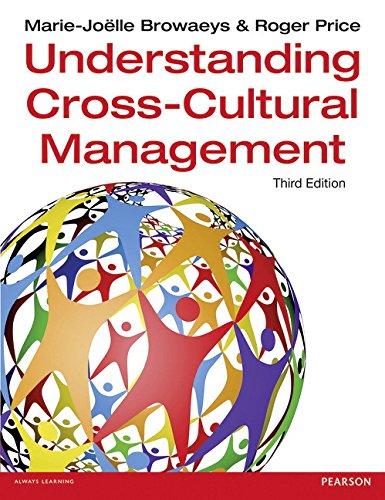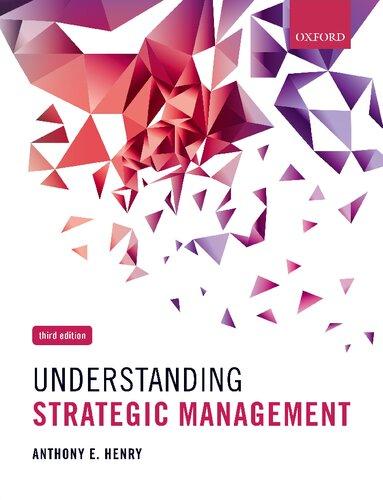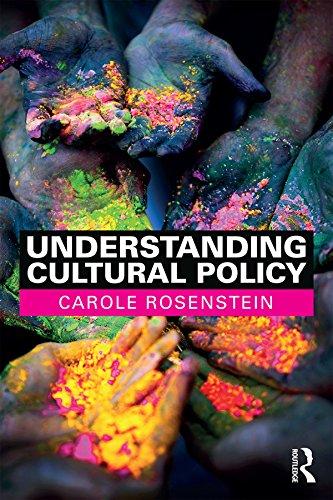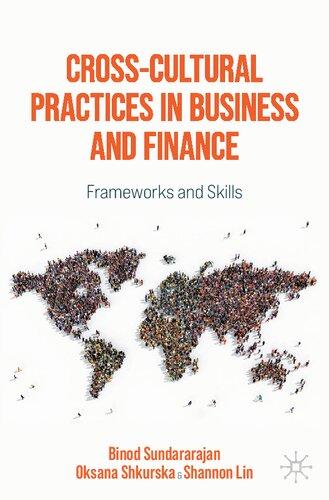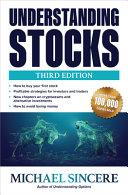Preface
Knowing is not enough; we must apply. Willing is not enough; we must do.
Johann
Wolfgang von Goethe
This third edition maintains the approach taken by its predecessors: it explores the many facets of cross-cultural management while allowing the reader to apply the many theories and ideas which have evolved in this area to actual practice. However, as the result of the feedback received from our readers as well as from the publisher’s reviewers, we have given extra attention in this edition to particular areas. This has involved, in Part One for example, adding a number of theoretical issues which are now addressed in the form of chapter prefaces, extending our coverage of GLOBE’s research findings and giving particular attention to the BRICS countries. In line with the feedback mentioned above, some of the topics in Part Two and Part Three have been replaced – or given less prominence – to allow other topics to be featured.
Updating has been an essential part of preparing this new edition. This has involved replacing a number of the newspaper articles used in the book, as well as including new case material based on recent research. This material not only facilitates the application of theory to practice, but also enables a more detailed examination of research methods used in the area of cross-cultural management.
Preparing for global business
Given the globalisation of business and increasing diversity within the workforce of so many industries and organisations, a cross-cultural component in management education and training can no longer be considered as a useful ‘add-on’ merely for those who might consider venturing abroad to pursue their career. Nowadays, more and more managers and professionals are required to work effectively across cultural borders. Even if they are confined to their offices, they are more and more likely to interact with people from other cultures. Training in cross-cultural management has therefore become a ‘must’, whatever the type of business education concerned, whether it be for aspiring graduates at the start of their career or for those senior managers who wish to increase their effectiveness in their present positions or their employability in the international market.
The approach of this book
This book is the result of our experiences in educating international executives and postgraduate students in the areas of cross-cultural management and cross-cultural business
communication. It reflects the need we felt for a practical, hands-on approach to study in this area which:
● offers a broad, if selective, view of theories, models and ideas on culture in terms of management, organisation and communication. This is preferable to providing just one particular (theoretical) approach to cross-cultural studies or giving an encyclopaedic survey of the subject area;
● allows the theories and ideas mentioned to be applied to practice through the inclusion of examples and brief case studies from the business world, as well as activities that require some of the theories outlined to be applied to business situations and to the reader’s own work situation.
Combining a concise overview of cross-cultural concepts and learning-by-doing activities is an approach to cross-cultural management we have found to be effective for both instructors and students, trainers and trainees. Students are exposed to approaches to cross-cultural aspects of business rather than being overwhelmed with detail about countries and their culture based on one theoretical framework. At the same time, they are asked to apply these approaches in a practical and relevant manner to a number of case studies, many of which are taken from the business media. When doing so, students are expected not only to use the concepts, but also to apply their own intuitive insights and cross-cultural experience. This can be a rewarding experience for those concerned because the learning-by-doing activities themselves can reveal cultural assumptions and attitudes of those undergoing the learning process.
The instructor will, it is hoped, appreciate the concise overview of theories and concepts relating to cross-cultural management while also being provided with activities to facilitate learning. Moreover, the material enables the instructor to make maximum use of the environment in which the learning is taking place. As a facilitator in the process, the instructor helps the students not only to ‘construct’ their own understanding based on their knowledge and experience, but also to take advantage of the informal learning process through those activities, which encourage interaction between trainees. Having said that, however, we believe that this book is also a valuable resource for self-study because it enables readers to extend and to deepen their cross-cultural awareness.
This approach to learning reflects a concern we had when writing a book that deals with culture: knowledge of oneself is as important as the knowledge of theory.
The structure of this book
This book is divided into three parts:
● Part One. Culture and management deals with the concept of culture, its facets and the levels at which culture operates. It explores cultural dimensions in the business context and examines the cultural dilemmas that arise for managers when making decisions. It finally presents a model of culture based on cultural value orientations that affect managerial and professional activities. Prior to the concepts presented, each chapter in Part One includes a short preface which introduces a theoretical issue.
● Part Two. Culture and organisations considers the influence of culture on aspects of organisations, including structures, corporate cultures and the role of leadership. The
cultural factors involved in strategy and strategic alliances, as well as in fundamental organisational change, come to the fore. Culture and international marketing, along with the question of cultural diversity in organisations, are also addressed.
● Part Three. Culture and communication examines how culture affects the process of communication both within and between cultures. Various cross-cultural contexts are dealt with, including negotiations and international teamwork. Cross-cultural conflict is given particular attention, as are the skills required to be an effective intercultural communicator.
Each of these parts is made up of six chapters
The chapters in Part One each begin with a preface. The chapters in Parts One and Two each contain two cross-cultural concepts and those in Part Three each contain one. These concepts address key ideas and theories developed by leading researchers and practitioners in the area of cross-cultural management, and present our overviews of their work. Spotlights and mini-cases (with questions) improve the application of the theories described. Each chapter of the book ends with at least two activities. These allow the learner to apply the concepts through exercises of various kinds.
The points for reflection given after the concepts encourage the readers to go beyond their knowledge of the subject matter and apply their skills to certain cross-cultural issues. Following these are a list of publications for further reading and references. These are intended for readers who wish to read more detailed accounts, or extend their knowledge of the areas in question.
The final activities at the end of each part pull the strings together. Being more extended in nature and incorporating the elements of each part, they are intended to provide a broader perspective of the area in question.
A particular type of exercise which plays a prominent role in the book is case analysis. We have found case studies to be a very effective learning tool: confronted with a dilemma described in each case, students are forced to consider their potential behaviour in the context described and learn from the choices they make. Interaction with their peers and instructor when accounting for their choices compels them to talk about their experiences and feelings, as well as the insights they have gained from reading the cross-cultural concepts in the book. The cases deal with many cultural contexts, so students are confronted with different ways of thinking, thereby helping them to develop transcultural competence.
Flexibility of approach
The arrangement of material is such that it allows flexibility in the sequence to be followed. Although we would suggest that Part One be the starting point for any programme of study, the sequence of chapters in Part Two and Part Three, as given below, need not be followed slavishly. The chapters may be re-arranged according to the priorities of the instructor and/or student. For example, if Chapters 8 and 18 are studied one after another, then the cultural aspects of leadership can be examined in terms of the communicative skills considered appropriate and effective in different national/organisational cultures. A further example: Chapters 9 and 15 can be studied together and so allow the issue of company takeovers and mergers to be combined with the negotiating process involved.
Acknowledgements
We would like to thank, first and foremost, Nyenrode Business University for encouraging us to prepare this book and to revise it for the third edition. We are particularly indebted to our colleagues in the university library who, through their patient dedication and efficiency, have allowed us to draw upon a considerable number of updated information sources.
We are also grateful to the editorial team at Pearson Education and their reviewers, for their unstinting professional support, to the readers/users of the previous editions for their advice and ideas, and to the Financial Times, whose coverage of international business has proved to be an indispensable source of recent business case studies for the new edition.
Our thanks also go out to the numerous contributors to the book. The contributions made by Fons Trompenaars and alumni from Nyenrode Business University deserve particular mention. Last, but by no means least, we would like to thank our respective partners, Wim and Anke, for their patience and encouragement while we undertook a further, time-consuming revision of the book.
Publisher’s acknowledgements
We are grateful to the following for permission to reproduce copyright material:
Figures
Figure I.1 from Managing Across Cultures, Prentice Hall (Schneider, S.C. and Barsoux, J.L. 2003) p. 21 © Pearson Education Limited 2003; Figure I.2 from Managing Across Cultures, FT Prentice Hall (Schneider, S.C. and Barsoux, J.L. 2003) p. 34 © Pearson Education Limited 2003; Figure 2.1 from Culture and Leadership Across the World: The GLOBE Book of In-Depth Studies of 25 Societies, Lawrence Erlbaum Associates (Chhokar, S.J., Brodbeck, F.C. and House, R.J. (ed.) 2007) p. 108, Copyright 2007 by TAYLOR & FRANCIS GROUP LLC – BOOKS. Reproduced with permission of TAYLOR & FRANCIS GROUP LLC – BOOKS in the formats Textbook and Other Book via Copyright Clearance Center; Figure 2.2 from Culture’s Consequences, 2nd ed., SAGE (Hofstede, G. 2001) p. 11, reproduced with permission; Figure on page 58 from Poster celebrating Europe Day, http://europa.eu/about-eu/basic-information/symbols/europe-day/index_en.htm; Figure 4.1 from Migration and business: weaving the world together, The Economist, pp. 72–74 © The Economist Newspaper Limited, London (Issue 8760) 19/11/2011; Figure 6.2 adapted from Cultural Analysis – Towards Further Understanding, Aalborg University Press (Gullestrup, H. 2006) p. 153, reproduced with permission; Figure 6.3 adapted from Doing Business Internationally: The cross-cultural challenges – Participant Workbook, Princeton Training Press (1992) 2.3, Reproduced by kind permission of TMC http://www.tmcorp.com/; Figure 6.4 adapted from Understanding Cultural Differences, Intercultural Press (Hall, E.T. and Hall, M.R. 1993) p. 103; Figure 7.1 from International Dimensions of Organizational Behaviour, 5th ed., South Western (Adler, N.J. with Gundersen, A. 2008) p. 128 © 2008 South-Western, a part of Cengage Learning Inc. Reproduced by permission. www.cengage. com/permissions; Figure 7.2 adapted from Exploring Corporate Strategy, 8th ed., FT Prentice Hall (Johnson, G., Scholes, K. and Whittington, R. 2008) © Pearson Education Limited 2008; Figure 7.3 from Business Across Cultures, Capstone (Trompenaars, F. and Woolliams, P. 2003) p. 106; Figure 8.2 from Six principles of effective global talent management, MIT Sloan Management Review (Stahl, Gunter K., Björkman, Ingmar and Farndale Elaine 2012) © 2012 from MIT Sloan Management Review/Massachusetts Institute of Technology. All rights reserved. Distributed by Tribune Content Agency; Figure 9.1 from Breaking Through Culture Shock, Nicholas Brealey (Marx, E. 1999) p. 12; Figure 10.1 adapted from Diagnosing and Changing Organizational Culture, Prentice Hall (Cameron, K.S. and Quinn, R.E. 1999) p. 32, reproduced by kind permission of Professor Cameron and Professor Quinn; Figure 11.2 from http://searchenginewatch.com/ article/2329906/Only-52-of-Facebook-Ad-Spend-is-Outside-the-U.S.-tuy, reproduced with permission from Marin Software; Figure 11.4 from Managing Cultural Differences:
Publisher’s acknowledgements
Strategies for Competitive Advantage, Addison-Wesley (Hoecklin, L. 1995) p. 101, © Pearson Education Limited 1995; Figure 12.1 from International Management Ethics: A Critical, Cross-cultural Perspective, Cambridge University Press (Jackson, T. 2011) p. 22; Figure 15.1 from ‘Negotiating with “Romans”’, Part 1, Sloan Management Review, 35 (2), p. 54 (Weiss, S.E. 1994); Figure 17.1 adapted from Thomas-Kilmann Conflict Mode Instrument, Xicom (Thomas, K.W. and Kilmann, R.H. 1974) p. 11; Figure 17.2 from Handbook of International and Intercultural Communication, SAGE (Gudykunst, W. and Mody, B. (eds.) 2002) Reproduced with permission of SAGE PUBLICATIONS in the format Republish in a book via Copyright Clearance Center; Figure 18.1 from Experiential Learning: Experience as the Source of Learning and Development Prentice-Hall (Kolb, D.A. 1984) p. 42, 1st ed., ©1984. Printed and Electronically reproduced by permission of Pearson Education, Inc., Upper Saddle River, New Jersey; Figure 18.2 from Foundations for the study of intercultural communication based on a third-culture model, International Journal of Intercultural Relations, 23 (1), pp. 91–116 (Casrnir, F.L. 1999), Copyright © 1999. With permission from Elsevier.
Map
Map 3.1 adapted from European Union, http://europa.eu/about-eu/countries/index_en.htm, © European Union, 1995–2014.
Tables
Table I.1 from Cultural Anthropology: Tribes, States and the Global System, Mayfield Publishing Co (Bodley J.H. 1994) p. 9, reproduced by kind permission of Dr J. Bodley; Table 1.1 adapted from Understanding Organizations through Language, SAGE (Tietze, S., Cohen, L., Musson, G. 2003) Reproduced by permission of SAGE Publications, London, Los Angeles, New Delhi and Singapore Copyright © SAGE Publications 2003; Table A1.1.2 adapted from Cross-border transfer of knowledge: cultural lessons from project GLOBE, Academy of Management Executive, pp. 59–76 (Javidan, G.K. 2005); Table 2.1 adapted from Variations in Value Orientations, Row, Peterson and Company (Kluckholn, F. and Strodtbeck, F. 1961) pp. 11–12; Table 2.8 adapted from Culture, Leadership and Organizations: The GLOBE study of 62 societies, SAGE (House, R.J., Hanges, P.J., Javidan, M., Dorfman, P.W. and Gupta, V. (eds.) 2004) p. 30, Global Leadership and Organizational Behavior Leadership effectiveness Research Program Reproduced with permission of SAGE PUBLICATIONS, INCORPORATED in the format Republish in a book via Copyright Clearance Center; Table 2.9 from Culture and Leadership Across the World: The GLOBE Book of In-Depth Studies of 25 Societies, Lawrence Erlbaum Associates (Chhokar, J.S., Brodbeck, F.C. and House, R.J. (eds) 2007) p. 993, Tab. 27.6, Copyright 2007 by TAYLOR & FRANCIS GROUP LLC – BOOKS. Reproduced with permission of TAYLOR & FRANCIS GROUP LLC – BOOKS in the formats Textbook and Other Book via Copyright Clearance Center; Table 2.11 from Culture and Leadership Across the World: The GLOBE Book of In-Depth Studies of 25 Societies, Lawrence Erlbaum Associates (Chhokar, J.S., Brodbeck, F.C. and House, R.J. (eds) 2007) p. 13, Copyright 2007 by
xvii
TAYLOR & FRANCIS GROUP LLC – BOOKS. Reproduced with permission of TAYLOR & FRANCIS GROUP LLC – BOOKS in the formats Textbook and Other Book via Copyright Clearance Center; Table 4.1 adapted from Asian versus Western Management Thinking: Its Culture-Bound Nature, Palgrave (Kase, K. Slocum, A. and Zhang, Y.Y. 2011) p. 105, Tab. 6.1, reproduced with permission of Palgrave Macmillan; Table 5.3 adapted from Trompenaars, F. and Woolliams, P. ‘Competency framework for the millennium manager’ in Case Studies on Cultural Dilemmas, Nyenrode University Press (Browaeys, M.-J. and Trompenaars, F. (eds.) 2000) pp. 21–28; Table 5.4 from The art of cross-cultural management: an alternative approach to training and development, Journal of European Industrial Training, 20 (1), p. 17 (Estienne, M. 1997); Table 8.1 adapted from Culture and Leadership in 25 Societies: Integration, Conclusions, and Future Directions in Chhokar, J.S., Brodbeck, F.C. and House, R.J. (eds.), Culture and Leadership Across the World: The GLOBE Book of In-Depth Studies of 25 Societies, Lawrence Erlbaum Associates (Brodbeck, F.C., Chhokar, J.S. and House, R.J. 2007) p. 1037, Copyright 2007 by TAYLOR & FRANCIS GROUP LLC – BOOKS. Reproduced with permission of TAYLOR & FRANCIS GROUP LLC – BOOKS in the formats Textbook and Other Book via Copyright Clearance Center; Table 10.1 from Organizational culture: what it is and how to change it in Evans, P., Doz, Y. and Laurent, A. (eds.), Human Resource Management in International Firms, Macmillan (Schein, E.H. 1989) pp. 83–94, reproduced with permission of Palgrave Macmillan; Table 14.1 from Cadres français et communications interculturelles, Editions Eyrolles (Gruère, J-P. and Morel, P. 1991); Table 15.1 from Cultural aspects of international business negotiations in Ghauri, N. and Usunier J.-C. (eds.), International Business Negotiations, 2nd ed., Elsevier (Usunier, J.-C. 2003) pp. 97–136; Table 16.2 from The Blackwell Handbook of Global Management, Blackwell (Maznevski, H.W., Mendenhall, M.L. and McNett, J.M.E. (eds.) 2004) pp. 232–234; Table 18.1 from Towards ethnorelativism: a developmental model of intercultural sensitivity in Paige, R.M. (ed.), Education for the Intercultural Experience, 2nd ed., Intercultural Press (Bennett, M.J. 1993) p. 29, reproduced by kind permission of Dr M.J. Bennett, http://www.idrinstitute.org; Tables 18.3, 18.4 and 18.6 from Training for the Cross-Cultural Mind, 2nd ed., SIETAR (Casse, P. 1981) pp. 140–146, Reproduced by kind permission of Professor Pierre Casse.
Text
Case Study A1.1 with permission from Robert Deidun and Javier Arias; Case Study A1.2 from Galderma: a joint venture between L’Oréal and Nestlé An empirical study of crosscultural relations between French, German and British managers in an international company (Browaeys, M.-J. Price, R.L. and Seifert, C.R.); Activity A2.1 adapted from Masters Thesis, Nyenrode Business School (Sierkstra, E. and Stal, R. 2005); Activity A2.2 adapted from The Challenge of Cross Cultural Management, Nyenrode University Press (Browaeys, M.-J. (ed.) 1996); Extract on page 79 adapted from Jock Phillips. ‘The New Zealanders –Multicultural New Zealand’, Te Ara – the Encyclopedia of New Zealand, updated 13-Jul-12 http://www.teara.govt.nz/en/the-new-zealanders/page-13; Extract on pages 87–88 from Wiring design faulted for Airbus A380 production delays (Blog Article 14634), http:// power.elecdesign.com (Davis S. 2007); Mini-Case 3.1 from German business culture should be a model for our own, The Observer, 15/08/2010(Sunderland, R.), Copyright Guardian News & Media Ltd. 2010; Spotlight 4.1 adapted with free translation from Paris
Publisher’s acknowledgements
supports the transfer of technology to India, Le Monde, 18/02/2013 (Follorou, J), reproduced with permission; Activity 4.2 adapted from Cases Studies on Cultural Dilemmas, Nyenrode University Press (Browaeys, M.J. and Trompenaars, F. (eds.) 2000) Case 10; Mini-Case 4.5 adapted from Celebrating business success in Africa in Poverty matters blog, The Guardian (the guardian.com) 09/06/2011 (Tran, M.), Copyright © Guardian News & Media Ltd. 2011; Extract on pages 135–137 from Case Studies on Cultural Dilemmas, Nyenrode University Press (Browaeys, M.-J. and Trompenaars, F. (eds.) 2000) pp. 29–33; Mini-Case 5.1 from Case Studies on Cultural Dilemmas, Nyenrode University Press (Browaeys, M.-J. and Trompenaars, F. (eds.) 2000) Case 7; Activity 5.1 from The practice of reconciliation in Browaeys, M.-J. and Trompenaars F. (eds.), Case Studies on Cultural Dilemmas, Nyenrode University Press (Trompenaars, F. 2000); Mini-Case 5.2 from Case Studies on Cultural Dilemmas, Nyenrode University Press (Browaeys, M.-J. and Trompenaars, F. (eds.) 2000) Case 5; Activity 5.2 from Case Studies on Cultural Dilemmas, Nyenrode University Press (Browaeys, M.-J. and Trompenaars, F. (eds.) 2000) Case 9; Spotlight 6.4 from Renault-Nissan and Mitsubishi agree co-operation deal, Daily Telegraph (telegraph.co.uk), 05/11/2013 (Hudson, P.), copyright © Telegraph Media Group Limited 2013; Activity 7.1 from Cases Studies on Cultural Dilemmas, Nyenrode University Press (Browaeys, M.-J. and Trompenaars, F. (eds.) 2000) Case 4; Spotlight 7.2 from Team learning on the edge of chaos, The Learning Organization, 17 (1), pp. 61–62 (Fisser, S. and Browaeys, M.-J. 2010); Activity 8.2 from Why multinationals struggle to manage talent (Retrieved from Business Source Complete database), McKinsey Quarterly, 4 pp. 10–13 (Guthridge, M. & Komm, A. 2008), This article was originally published in McKinsey Quarterly, www.mckinseyquarterly.com. Copyright © 2008 McKinsey & Company. All rights reserved. Reprinted by permission; Spotlight 8.3 from Business Times, Singapore, 05/10/2009, reproduced with permission; Activity 9.2 adapted from The Challenges of Cross-Cultural Management, Nyenrode University Press (Browaeys, M.-J. (ed.) 1996) pp. 41–50; Activity 11.1 from Analysis of the Indian Truck Market, Nyenrode University Press (Engelaer, F. and Vioet, D. 2005); Activity 11.2 adapted from Cases Studies on Cultural Dilemmas, Nyenrode University Press (Browaeys, M.-J. and Trompenaars, F. (eds.) 2000) Case 6; Extract on page 304 from A new unified competency framework for the millennium manager in Browaeys, M.-J. and Trompenaars, F. (eds.), Case Studies on Cultural Dilemmas, Nyenrode University Press (Trompenaars, F. and Woolliams, P. 2000) pp. 21–28; Spotlight 12.1 adapted from Companies apathetic about corruption, The Telegraph (telegraph.co.uk) 08/09/2013 (Roland, D.), copyright © Telegraph Media Group Limited 2013; Activity 12.1 adapted from Diversity versus localization within a telecommunications company in Latin America, Nyenrode Business University (Danker, R. 2006); Activity 13.1 from English names catch on amongst Chinese: young bridging a gap with West, Boston Globe, 01/10/2006 (Pocha, J.S.), Reproduced by permission of the author; Spotlight 13.2 from Meeting-room jargon: just fuel for buzzword bingo?, http://www. worldwidewords.org/articles/jargon.htm (Quinion, M. 2000); Mini-Case 14.1 from Unleash the power of the Hispanic market by avoiding these pitfalls, Quirk’s Marketing Research Review, April (Baroutakis, M. 2010), http://www.quirks.com/articles/ a2000/20000402.aspx?%20searchID=2071341 [accessed 01/09/2010], Reproduced by kind permission of Quirk’s Marketing Research Review; Activity 14.2 from Case Studies on Cultural Dilemmas, Nyenrode University Press (Browaeys, M.-J. and Trompenaars, F. (eds.) 2000) Case 11; Spotlight 14.3 adapted from L’informatique a-t-elle un sexe?, Le Monde Diplomatique, 03/06/2007, p.3 (Collet, I.); Activity 17.1 from Cases Studies on Cultural
xix
Dilemmas, Nyenrode University Press (Browaeys, M.-J. and Trompenaars F. (eds.) 2000) Case 1; Activity 17.2 from Untangling alliances and joint ventures, FT.com, 16/10/2006 (Manzoni, J-F. and Barsoux, J-L.); Activity 18.2 from Cases Studies on Cultural Dilemmas, Nyenrode University Press (Browaeys, M.-J. and Trompenaars, F. (eds.) 2000) Case 8.
The Financial Times
Spotlight 1.1 adapted from British phone-hacking inquiry calls for press regulation with force of law, Financial Times, 30/11/2012 (Budden, R., Fenton, B. and Stacey, K.), © The Financial Times Limited. All Rights Reserved; Activity 1.1 adapted from A rather civil partnership, Financial Times (FT.com), 20/01/2012 (Hill, A.), © The Financial Times Limited. All Rights Reserved; Activity 2.1 adapted from Masters of collaboration, Financial Times, 29/06/2007, p. 8 (Lester T.), © The Financial Times Limited. All Rights Reserved; Spotlight 2.2 adapted from A question of identity, Financial Times (FT.com), 23/11/2012 (Kuper, S.), © The Financial Times Limited. All Rights Reserved; Extract on page 87 adapted from Airbus and the damage done by economic patriotism, Financial Times, 02/03/2007 (Vives, X.); Extract on pages 89–90 adapted from For EADS partners, culture still matters, Financial Times, 27/09/2012 (Skapinker, M.), © The Financial Times Limited. All Rights Reserved; Mini-Case 3.2 from A tale of two Russian factories, Financial Times, 07/07/2006, p. 9, © The Financial Times Limited. All Rights Reserved; Activity 3.2 from Why financial scandals differ in the US and Europe, Financial Times, 13/04/2005, p. 12 (Skapinker M.), © The Financial Times Limited. All Rights Reserved; Mini-Case 3.3 from Turkey seeks influence in Africa, Financial Times, 07/01/2013 (Dombey, D.), © The Financial Times Limited. All Rights Reserved; Spotlight 3.7 adapted from Australia: Proud of its seat at the top table, Financial Times, 26/01/2010 (Smith, P.), © The Financial Times Limited. All Rights Reserved; Mini-Case 4.1 from Culture turned Fukushima from disaster to crisis ‘made in Japan’, Financial Times, 06/07/2012 (Dickie, M.), © The Financial Times Limited. All Rights Reserved; Mini-case 4.2 adapted from Pressure mounts on chaebol chiefs, Financial Times, 24/02/2013 (Song Jung-a), © The Financial Times Limited. All Rights Reserved; Mini-Case 4.3 adapted from Holiday groups target India’s newly affluent travelling set, Financial Times, 03/03/2010, p.9 (Kazmin A.), © The Financial Times Limited. All Rights Reserved and Lloyd’s of London hits at ‘difficult’ India, Financial Times, 04/03/2010 (Nakamotot M. and Leahy J.), © The Financial Times Limited. All Rights Reserved; Activity 4.4 from A new generation of family firm, Financial Times, 10/03/2007, p.12 (Lucas L.), © The Financial Times Limited. All Rights Reserved; Activity 7.2 adapted from The capital gained from culture, Financial Times, 17/08/2009, p. 10 (Simon, B.), © The Financial Times Limited. All Rights Reserved; Activity 8.1 from Le Patron, der chef and the boss, Financial Times, 09/01/2006, p.10 (Maitland, A.), © The Financial Times Limited. All Rights Reserved; Spotlight 8.2 from Gender diversity boosts company shares, Financial Times (FT.com), 18/04/2013 (Clarke, C.), © The Financial Times Limited. All Rights Reserved; Spotlight 4.5 adapted from Transfer of assets tarnished by elitism, Financial Times, 16/07/2009 (Lapper, R.), © The Financial Times Limited. All Rights Reserved; Mini-Case 4.6 from FT Report – Qatar, Financial Times, 18/05/2005, p.1 (Wallis W.), © The Financial Times Limited. All Rights Reserved; Spotlight 9.1 from China suspends India power projects, Financial Times, 23/03/2010 (Lamont, J.), © The Financial Times Limited. All Rights Reserved; Mini-Case 9.1 adapted from Carmakers’ alliance faces
Publisher’s acknowledgements
cultural chasm, Financial Times, 07/04/2010 (Schafer, D. and Reed, J.), © The Financial Times Limited. All Rights Reserved; Activity 9.1 from Marriage after a century of cohabitation: Shell prepares for the next merger round, Financial Times, 28/06/2005, p. 21, © The Financial Times Limited. All Rights Reserved; Spotlight 10.1 adapted from The challenges facing leadership, Financial Times (FT.com), 12/11/2009 (Goffee, Rob and Jones, Gareth), with permission from authors; Mini-Case 10.1 from Brussels launches probe into secret accounts, Financial Times, 16/07/2003, © The Financial Times Limited. All Rights Reserved; Spotlight 10.2 from Decision-making, John Kay’s way, Financial Times, 20/03/2010 (Kay, J.), © The Financial Times Limited. All Rights Reserved; Mini-Case 10.2 from GM and Chrysler steer different paths to recovery, The Financial Times, 14/08/2009 (Simon, B.), © The Financial Times Limited. All Rights Reserved; Activity 10.2 adapted from Samsung sows for the future with its garden of delights, Financial Times, 04/01/2008 (Fifield, A.), © The Financial Times Limited. All Rights Reserved; Mini-Case 11.1 from Cadbury to raise India’s role, Financial Times, 01/06/2009, p.19 (Leahy, J.), © The Financial Times Limited. All Rights Reserved; Mini-Case 12.1 from Oil and gas has highest bribery rate, Financial Times (FT.com), 15/07/2012 (Chazan, G.), © The Financial Times Limited. All Rights Reserved; Activity 12.2 adapted from Ikea: against the grain, Financial Times (FT.com), 13/11/2012 (Milne, R.), © The Financial Times Limited. All Rights Reserved; Mini-Case 13.1 from Straight-talking, English-speaking culture brings communication problems, Financial Times, 09/11/2006, p.31 (Lau, J.), © The Financial Times Limited. All Rights Reserved; Activity 13.2 from Why English is de rigueur in many French boardrooms, Financial Times, 25/03/2008, p.8 (Braithwaite, T. and Smith, C.), © The Financial Times Limited. All Rights Reserved; Spotlight 13.3 from A matter of interpretation, Financial Times, 02/02/2010, p. 16 (Clegg, A.), © The Financial Times Limited. All Rights Reserved; Activity 14.1 from Germans aim for a World Cup surprise: they’re fun, Financial Times, 22/05/2006, p.19 (Williamson, H.), © The Financial Times Limited. All Rights Reserved; Spotlight 16.1 from Global communication, Financial Times, 09/09/2004, p.13 (Maitland, A.), © The Financial Times Limited. All Rights Reserved; Activity 16.1 from Virtual teams: global harmony is their dream, Financial Times, 11/05/2005, p.8 (Murray, S.), reproduced with permission from the author; Spotlight 16.2 from Diversity in teams, Financial Times, 27/03/2007 (Maznevski, M.), © The Financial Times Limited. All Rights Reserved.
In some instances we have been unable to trace the owners of copyright material, and we would appreciate any information that would enable us to do so.
Part One
Introduction to Part One
Setting the scene
This introductory chapter will give an outline of the research in the field of culture and management, which in turn serves as a framework for Part One.
The concept of culture
Many experts in their fields have wracked their brains to come up with what they consider to be their concept of ‘culture’. Those working in the field of cultural anthropology, alone, for example, have come up with a long list of definitions of the concept, based on their analysis of ethnological, social, psychological and linguistic data. The attempt made by Bodley (1994) to summarise these (Table I.1) gives an idea of all the facets of culture that need to be taken into account from an anthropological perspective.
Although acknowledging the multiplicity of cultures, the authors of this book consider that the fundamental aspect of culture is that it is something all humans learn in one way or another. It is not something people inherit, but rather a code of attitudes, norms and values, a way of thinking that is learnt within a social environment. Family, the social environment, school, friends, work – all these help to form this code and determine how people see themselves and the world. The national culture and the particular region which people live in also help to shape a person’s cultural profile.
Although culture is reflected in individual behaviour, it is a way of thinking shared by individuals in a particular society that makes culture what it is.
Table I.1 Diverse definitions of culture
Topical Culture consists of everything on a list of topics, or categories, such as social organisation, religion and economy
Historical Culture is social heritage, or tradition, that is passed on to future generations
Behavioural Culture is shared, learned human behaviour; a way of life
Normative Culture is ideals, values, or rules for living
Functional Culture is the way humans solve problems of adapting to the environment or living together
Mental Culture is a complex of ideas, or learned habits, that inhibit impulses and distinguish people from animals
Structural Culture consists of patterned and interrelated ideas, symbols, or behaviours
Symbolic Culture is based on arbitrarily assigned meanings that are shared by a society
Source: Bodley, 1994: 9.
Figure I.1 Navigating the seas of international business
Source: adapted from Schneider and Barsoux, 2003: 21.
Culture operates on three levels
Culture operates on three levels, the first being on a level where it is observable and tangible. Here, artefacts and attitudes can be observed in terms of architecture, rituals, dress codes, making contact, contracts, language, eating and so on. Operating at a second level, culture is to do with norms and values. Beliefs – or norms – are statements of fact about the way things are. These are the cultural rules, as it were, which explain what is happening at level one and determine what is right or wrong. Values are to do with general preferences as to what is good or bad, how things should be. The third – and deepest level – has to do with basic assumptions. This level is difficult to explore and what lies there can only be construed through interpretation of what is happening at the other levels. Interpretation involves trying to explain why we act according to particular rules or in line with particular values. It is to do with the question ‘Why?’ and the attempt to answer it with more than just a ‘Because!’
Figure I.1, based on one devised by Schneider and Barsoux (2003), gives a visual interpretation of these levels of culture and the ways they can be investigated. Exploring culture can be compared with exploring the ocean. On the surface, artefacts, rituals and behaviour can be seen. These give an idea of what may be below. The underlying norms and values can be ascertained through interviews and surveys. The assumptions lying at the very bottom can only be inferred through interpretation.
Giving dimensions to culture
Assumptions in the exploration of culture – the key dimensions – can be ascertained from the work of the anthropologists Kluckholn and Strodtbeck. In 1961, they developed a comparative model with six cultural orientations:
1. the nature of people;
2. the relationship to nature;
3. the relationship to other people;
4. the modality of human activity (doing and being);
5. the temporal focus of human activity (future, past, present);
6. the concept of space (private/public).
These cultural orientations have inspired researchers in culture and management, such as Schein, Adler, Hall, Hofstede and Trompenaars. These dimensions can help to define the cultural profile of people and discover the preferences that cultures have in relation to their environment.
Such dimensions are not to be considered as static but as being evolutionary in nature. The culture may change not only as a result of influences from outside the culture being depicted, but also from within, through changes to the orientations outlined above. Changes from within could, for example, occur as a result of the increasing multicultural nature of the society in question.
Understanding culture and management
The researchers referred to in Figure I.2 have developed models relating to this area:
● Edgar Schein examined the effect of the organisation on culture.
● Edward Hall was one of the first to study the role of communication in management.
● Nancy Adler pioneered the study of the influence of culture on organisational functions.
● Geert Hofstede and Fons Trompenaars both established dimensions to measure the impact of national culture on management.
Part One explores the effect of culture on management by examining the insights each of these researchers has developed. Work by other researchers in the same field is also discussed. Each chapter in Part One has a preface which introduces a theoretical issue related to the subject matter to be covered in the concepts. The approaches presented are intended not only to provide some understanding of culture and management in an international environment, but also to help develop the attitudes and behaviours desirable in a specific cross-cultural context.
The concepts presented in each chapter generally contain a number of spotlights and mini-cases. A spotlight is usually a short text that serves to illustrate a particular theme or subject developed in the concept in question. A mini-case is essentially a short case study taken from business life and which requires analysis by means of questions posed afterwards. Many of these cases are based on (edited) articles from the Financial Times. The points of reflection which follow the concepts are intended to consolidate the reader’s learning by raising key issues arising from the subject matter presented. The activities which round off each chapter allow the reader to apply what has been learned from the preceding concepts to a particular scenario or extended case study. Two final activities will close Part One.
Part Two and Part Three are structured in a similar way and contain all the features described in the above paragraph.
Source: Schneider and Barsoux, 2003: 34.
Chapter and concept overview
Chapter 1 Determinants of culture
Chapter 1 examines the very concept of culture, its facets as well as the role of norms and values. The levels at which culture operates – from family through organisation to society – are also described. Organisational culture as a ‘metaphor’ is briefly explored. The chapter is divided into a preface and two concepts:
● Preface: organisational culture and ethnography.
● Concept 1.1 Facets of culture. After giving a short definition of the word ‘culture’ and its various ‘layers’, the concept will analyse the meaning of value systems for societies.
● Concept 1.2 Levels of cultures. This concept considers the levels of cultures ranging from national to organisational level and examines those elements that define them.
Figure I.2 Key dimensions of culture
Chapter 2 Dimensions of culture: Hofstede and GLOBE
Chapter 2 explores cultural dimensions in the business context with particular reference to research by Geert Hofstede and GLOBE (Global Leadership and Organizational Behaviour Effectiveness), an ongoing research project. It also puts forward criticisms concerning the cultural dimension construct, particularly that devised by Hofstede. The chapter is divided into a preface and two concepts:
● Preface: a model from social anthropology.
● Concept 2.1 Hofstede’s national cultural dimensions. The five dimensions developed by Hofstede are explained, and the extremes of each characterised in terms of management and business. The criticisms made about Hofstede’s research method as well as about the characterisation of national cultures are also outlined.
● Concept 2.2 Cultural dimensions according to GLOBE. The nine cultural practice dimensions devised by the GLOBE project are reviewed. A brief exploration of societal cultures practices (‘As Is’) and values (‘Should Be’) exemplifies how these values and practices affect organisational culture on all nine dimensions of organisational cultural practice.
Chapter 3 Business cultures in the Western world
This chapter, together with Chapter 4, gives an overview of business cultures in the world. The culture clusters as devised by GLOBE and presented in Chapter 2 are the starting point. The chapter is divided into a preface and two concepts:
● Preface: two approaches to the concept of multiculturalism.
● Concept 3.1 European cultures. Elements in particular countries belonging to the European clusters are highlighted. One further country is included in this concept – Turkey. European business cultures are examined in cluster terms, and some similarities and differences between component countries noted. Attention has been paid to Central and East European emergent economies, particularly to Russia, the only BRICS country in Europe.
● Concept 3.2 American and Australasian cultures. This concept focuses on countries to which European cultures were ‘exported’ along with new immigrants. The countries covered include those in North America, Latin America, particularly Brazil (a BRICS country) and Australasia.
Chapter 4 Business cultures in Asia, Africa and the Middle East
The chapter will cover those clusters which were not covered in Chapter 3. The countries in these clusters are examined in terms of certain similarities that set them apart from Western business cultures. Attention is paid to three of these countries – China, India and South Africa – which share similarities with the clusters described in Chapter 3 while belonging to the BRICS group.
The chapter is divided into a preface and two concepts:
● Preface: two different cognitive approaches to management.
● Concept 4.1 Asian cultures. Two clusters are considered in Asia, the one influenced by Confucianism, the other – in Southern Asia – influenced by Hinduism. The significant role of the Chinese and Indian diasporas in business is explained.
